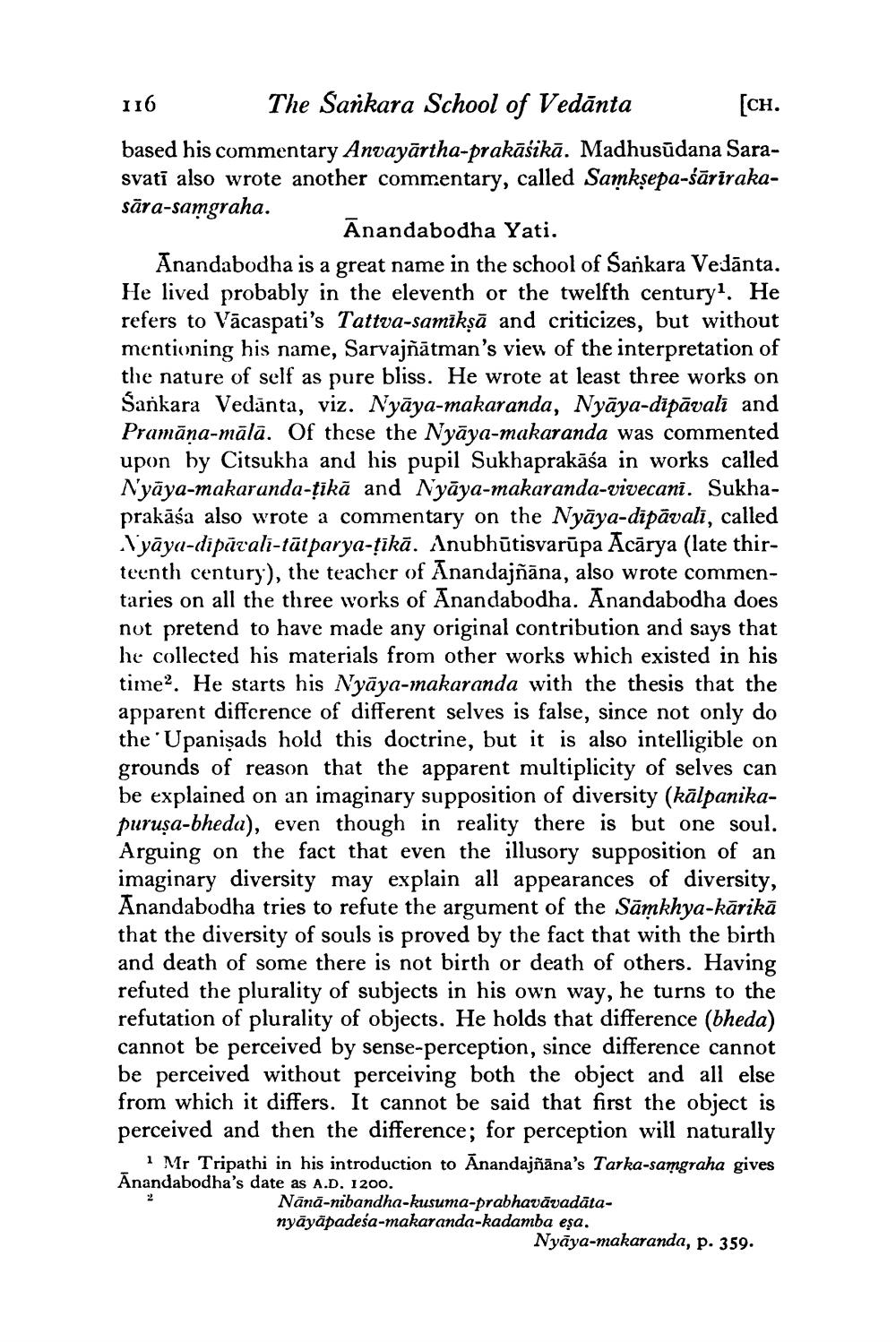________________
116
The Sankara School of Vedanta
[CH.
based his commentary Anvayārtha-prakāśikā. Madhusudana Sarasvati also wrote another commentary, called Samkṣepa-śārīrakasara-samgraha. Anandabodha Yati.
Anandabodha is a great name in the school of Sankara Vedānta. He lived probably in the eleventh or the twelfth century1. He refers to Vacaspati's Tattva-samikṣā and criticizes, but without mentioning his name, Sarvajñātman's view of the interpretation of the nature of self as pure bliss. He wrote at least three works on Sankara Vedanta, viz. Nyāya-makaranda, Nyaya-dipavali and Pramāṇa-mālā. Of these the Nyāya-makaranda was commented upon by Citsukha and his pupil Sukhaprakāśa in works called Nyaya-makaranda-ṭikā and Nyaya-makaranda-vivecani. Sukhaprakāśa also wrote a commentary on the Nyaya-dipāvalī, called Nyāya-dipāvali-tātparya-ṭīkā. Anubhūtisvarūpa Acārya (late thirteenth century), the teacher of Anandajñāna, also wrote commentaries on all the three works of Anandabodha. Anandabodha does not pretend to have made any original contribution and says that he collected his materials from other works which existed in his time2. He starts his Nyāya-makaranda with the thesis that the apparent difference of different selves is false, since not only do the Upaniṣads hold this doctrine, but it is also intelligible on grounds of reason that the apparent multiplicity of selves can be explained on an imaginary supposition of diversity (kālpanikapuruşa-bheda), even though in reality there is but one soul. Arguing on the fact that even the illusory supposition of an imaginary diversity may explain all appearances of diversity, Anandabodha tries to refute the argument of the Sāmkhya-kārikā that the diversity of souls is proved by the fact that with the birth and death of some there is not birth or death of others. Having refuted the plurality of subjects in his own way, he turns to the refutation of plurality of objects. He holds that difference (bheda) cannot be perceived by sense-perception, since difference cannot be perceived without perceiving both the object and all else from which it differs. It cannot be said that first the object is perceived and then the difference; for perception will naturally 1 Mr Tripathi in his introduction to Anandajñāna's Tarka-samgraha gives Anandabodha's date as A.D. 1200.
2
Nānā-nibandha-kusuma-prabhavāvadātanyāyāpadeśa-makaranda-kadamba eşa.
Nyaya-makaranda, p. 359.




